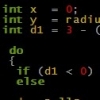phantom, on 24 Aug 2013 - 12:20 AM, said:
Every time I read this I can't help but laugh... at XP's release the general feel was 'omg, why do I want this bloated overly bright OS?' ('Tellytubby' like was a phrase I heard often, but I don't know how well that translates outside the UK) and a chorus of "I'll stick with Win98/2k" (depending on your flavour).
Vista gets released and suddenly 'XP is the best OS evah!'... (Vista, for all its flaws, was a solid OS - the biggest problem it had was major companies *koff-nVidia-koff* apparently forgot how to make drivers which wouldn't take down a system if you looked at it wrong..)
That's your opinion, and maybe it's true for some people, but in my case it is as ridiculously wrong as you're putting my opinion (and I daresay that's the case for not few people).
At the time of Win95, I was using a Mac and laughing at Windows users, even though (except for Photoshop) there was no single program on Mac that was in any way competitive with anything from Microsoft. Writing a simple letter took me 3 times as long as it would take a Windows user, but hey... my letters looked (almost indistinguishably) better, and the way I was doing it was "cool". Tell me about Mac users being brainwashed.
But regardless, I used Internet Explorer for Mac for years because it was by far the best browser available. How ironical is that. Still, I only used Windows when I absolutely had to and couldn't avoid it, because you know, Windows sucks and Mac is cool. Those stupid PCs with their IDE disks and ISA/PCI cards, SCSI and NuBus is so much better. *cough*
The NT 4.0 box that I had to use in uni to edit videos was basically "Windows 95 with the additional property that you only needed to look at them for something to go wrong". But, it had an awesome framegrabber card (much higher quality than the roughly 2x as expensive one I had on my Mac) and a hardware video compressor which worked in almost realtime (note that "almost realtime" at that time meant "only 1 hour" instead of "all night"). That card cost about as much as a medium-class automobile at that time, but hey... university funds are unlimited or so it seems. Oh, and there was a striped RAID with 3 disks and hardware controller, for scratch data. Unimaginable to have such a thing in a Mac at that time.
When I bought my first own Windows PC, after having disgruntled with Apple for scamming their customers over the PowerMac series twice, it came OEMed with Win98SE. My first impression was "Oh wow, this doesn't suck so much at all, actually it's quite cool". I used Win98SE without ever having a serious problem (I once made the disk unbootable trying to install Linux as dual-boot, but that's hardly Win98's fault), until about a year after XP came out, at which time I decided that upgrading might be worthwhile.
When switching to XP, my initial thought after previously having seen it from far was "meh, silly round windows, looks like plastic... but hum...".
In contrast to that, my first impression after insert-cd-press-install was "Woah, fucking cool". Windows XP just worked, and it worked well.
You plug in some device, and after (usually almost-automatical) driver install, it worked. No problems whatsoever. No hardware that you could plug in that doesn't work. Using different accounts and file permissions, aside from the somewhat weird approach that MS has taken, once you get used, it works just as well as e.g. Linux does (not necessarily by default and out of the box, admittedly, but if you care then it works very well). Leaving the computer turned on all week, only turning off for the weekend, no problem.
The (new) NT4 SP6a boxes that we had in uni at that time ran at about half the speed despite double the processing power and four times the RAM, and when you looked at them from a wrong angle, something went wrong. Woe if you put in a "wrong" USB stick, for that would instantly cause a bluescreen.
I've never seen any such thing as a bluescreen on Windows XP, except for one particular computer which was built by the local computer shop's 17 year old expert using RAM that was incompatible with the motherboard. Note that memtestx86 not only constantly reported errors but also crashed after a while, so I'm inclined to say this wasn't precisely a WinXP problem, but a "very justified" bluescreening on a machine that was simply... defect, no more and no less.
Then came Vista and I didn't even try it once after seeing what trouble it caused for a couple of friends of mine. Slow, unwieldy, that unnecessary toy UI, and regular crashes. In fact, because Win7 kind of "looks like" Vista from far away, I didn't even try Win7 until January 2013 other than once running the preview release in VirtualBox, which wasn't all that convincing to be honest (but in retrospective not Win7's fault).
The initial impression of Windows 7 when actually installing it was "Oh fuck, why didn't I try this earlier!". It was as much an eye opener as WinXP was back in the time. The Aero interface took a day or two until I actually liked the look, but then I didn't want to do without it any more. Performance is great, usability and compatibility is a dream.
Then came Windows 8. I looked at the preview release in VirtualBox, and was immediately set back by the unusable interface. Well, that's because it's made for touch, I guessed. How stupid that they enable that for desktops too, I said. Bleh, not going to use.
So, a few months later, I bought a Win8 tablet-convertible. Now this one does have touch, so Win8 should fly. I didn't buy an Android tablet because I wanted a "real" computer, not just a toy to read mails and surf, heh. Turns out Win8 is just as much shit on the tablet, too.
Booting takes twice as long when "docked" as compared to when "not docked" (i.e. without the keyboard). Why, nobody can figure. Shutting down and undocking (or docking), then turning on again bluescreens. Apparently you're not allowed to remove plug-and-play hardware while the computer is turned off, WTF?
Docking during boot bluescreens on about 1 in 10 attempts. In comparison to the above, that's pretty stable, but still WTF. Docking/undocking during "normal operation" works without any issues. No single problem doing it a hundred times in a row. WTF?
Pressing the "off button" on the top of the device puts Windows in "power save", whatever that means (presumably something like S3?). Except it doesn't. Left like this over night, the device has an empty battery the next morning. Turns out that the NAS which is on the local network has audio streaming capabilities, and Win8 keeps WiFi up and running all the time and does some shitfuck polling on the media server every few seconds, which very reliably drains the battery. Awesome. I'm not even interested in media serving.
Booting takes close to (and sometimes upwards of) one minute. What the...? Turns out that once you disable the superfetch service (which according to MS should disable itself automatically on SSD), it "boots" in 7 seconds, but still it hangs for about 30 seconds during login. You wait and wonder whether the gesture you made was well recognized or not (which is an annoying game, too). Once you disable the indexer service as well, it boots in 7 seconds and login takes under 1 second. Seriously, what the fuck?
Login gestures themselves are another topic one could rant about for an hour. How hard can it be to draw three lines wrongly? Apparently it's not very hard to do wrong, because I still need 2-3 attempts after weeks of training.
So you're allowed to change the lock screen, great. Except when you have 2 users on your tablet (of which only one has admin rights and the right to change the lock screen), it won't work. And, except it doesn't work reliably anyway. Win8 always loads and displays the default lock screen first, and then loads the one you configured half a second later. Now you're going to say that this is a very unimportant detail, and it really is. However, it shows how pathetically unfinished the product is, even in petty details.
The same goes for the desktop wallpaper. Win7 was perfectly able to do a smooth transition from the login page to the readily loaded as-is desktop including wallpaper. Of course, what else. Win8 will show a solid color desktop, and then load the wallpaper. Even if the computer has been up for minutes and it shows the wallpaper correctly in Metro's "Desktop" tile.
So there is this "awesome" new Metro interface. It arranges my tiles in two big groups (it won't let me place tiles where I want them easily anyway, Win Blue at least seems to somewhat mitigate this deficiency). Too bad that Metro is so fucking intelligent as to choose the gaps and the left margin for you. In its smartness, Metro deems an extra half-large-tile margin as a good idea, which is just enough so the rightmost column does not fit on the screen, it's cut in half. It doesn't help if you scroll the screen to the correct position because it will reset to the default setting every time you close an application. Gee what a luck that Metro is so much fucking smarter than you are.
Then of course there's the issue of system settings and the totally misdesigned new desktop UI with Office-style toolbars which doesn't work for touch at all. And of course the half-assed supply of apps.
It's probably asked too much to integrate touch functionality without requiring a total application rewrite, too. So sure enough, you can use touch in some MS programs, but in every other program it doesn't work or doesn't work properly. Scrolling with your finger in Notepad++ moves the window, and in Firefox it works as intended half of the time and doesn't work half of the time (for example on GD.net).
Note that I haven't even mentioned the missing start menu at all. Yes indeed there is more to Win8 than "no start menu". And no, the proposed "solution" in Blue is not acceptable. It's a mockery of customers rather than responding to customer input.
The one major remaining Win7 issue (the only thing that really annoys me in Win7) that it will fail to reconnect network shares. That bug has persisted in Windows ever since ... always? Under Win8, it is even worse.
In Win7 and before, it presumably fails because of some race between initializing network and SMB, or so the explanation on some MS blog goes. There are some known "workarounds" for it which work more or less (often less) reliably.
Now in Win8, even after you've booted into Metro UI and the computer has been up for minutes, it will still fail once you switch to desktop, and there isn't even an unreliable workaround.
With touch, it's easy to inadvertedly drag some items in Explorer to some other location, including drives and folders in the mini-tree. This could in very rare cases happen with the mouse too, but with one difference. Once DnD is started, you can complete it "successfully" by releasing the left button or abort it by pressing the right button with the left button still held.
Well, good job that Win8 and WinRT require that touch devices support 10 fingers and good job that it uses only a single finger with no way of doing a right-click or similar thing to abort the drag in such a situation. Good for you to remember to fire up the onscreen-keyboard to press Ctrl-Z afterwards, since "Undo" has magically disappeared from Explorer's menus (or has been hidden so well that I couldn't find it).
Good job that doing a right-click in general is done by holding down 3 seconds, too -- instead of e.g. tipping with a second finger on a device that supports several fingers. Who needs to do right-clicks anyway, except all the time.
Win8 accessibility is great, except it doesn't work. So you think you're super smart and use speech recognition to write your French letters. Because hey, you can talk much faster in that non-native language of yours than you can type, especially with all the accents and stuff.
Turns out this doesn't work. Well, doofus, of course, you need to change the system input language. Still doesn't work.
Well, doofus, you gotta download the language pack and change the complete regional settings. Although now all menus are in French, it still doesn't work, Windows tells you that you need to reboot for it to work.
So you reboot, and Windows tells you it can't enable accessability because of some error (it is still very obviously enabled, consuming system resources, but doesn't work, in either language).
So you decide to turn off accessibility again, and surprise, you can't. Because, hey, to turn off accessibility, you have to go through a dialog which -- for no good reason -- is so big that it won't fit on the screen if you have adjusted the DPI so you can read your high-res display.
You can't use speech recognition to say "Accept", because speech recognition doesn't work, and you can't click the button because it's off-screen. Awesome.
Locked out by accessibility, what an irony (n.b.: You can admittedly get out of the trap by rotating your display, in that case the dialog won't fit horizontally, but you can just see enough so you can press "Accept". This doesn't change the fact that such a dialog is a super moronic design, though -- for accessibility in particular.).
I could continue with this all day long (but life is too short). In one word, Win7 was just about perfect except for some minor annoyances, and Win8 is much worse no matter what you look at.
including little touches like the cursor not 'jumping' but 'flowing' forward as you type which, tbh, is the kind of touch I'd expect from Apple
That's the kind of "touch" which is total shit, if you ask me. Either you have typed a character, or you haven't. There is no in-between, there are no half-typed characters. Insofar, this is a "feature" that wastes CPU cycles to add something that is misleading rather than helpful. The cursor should jump.
![]()









